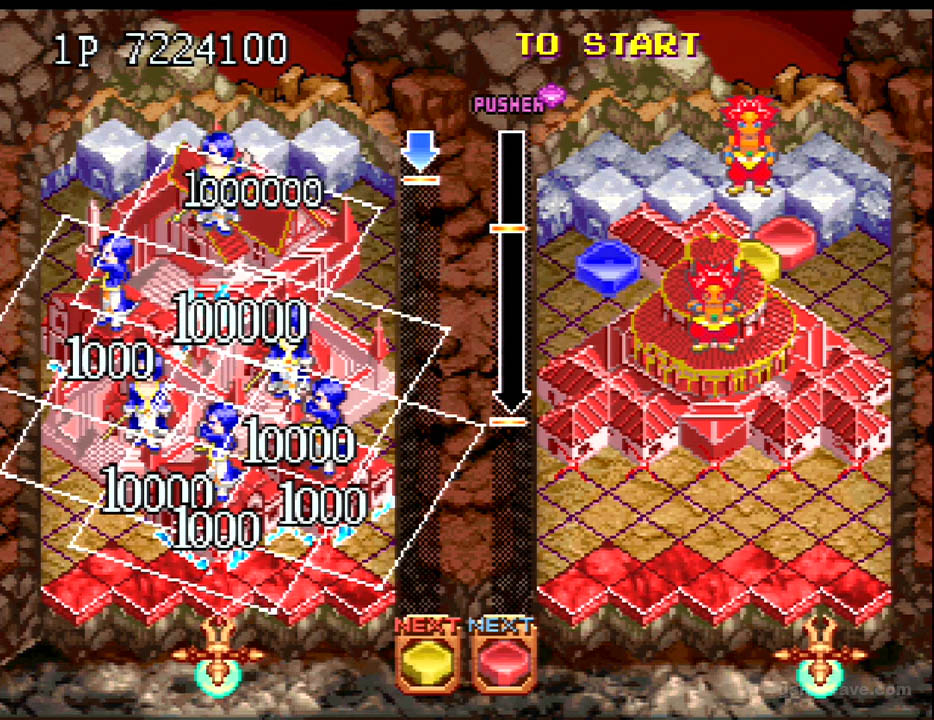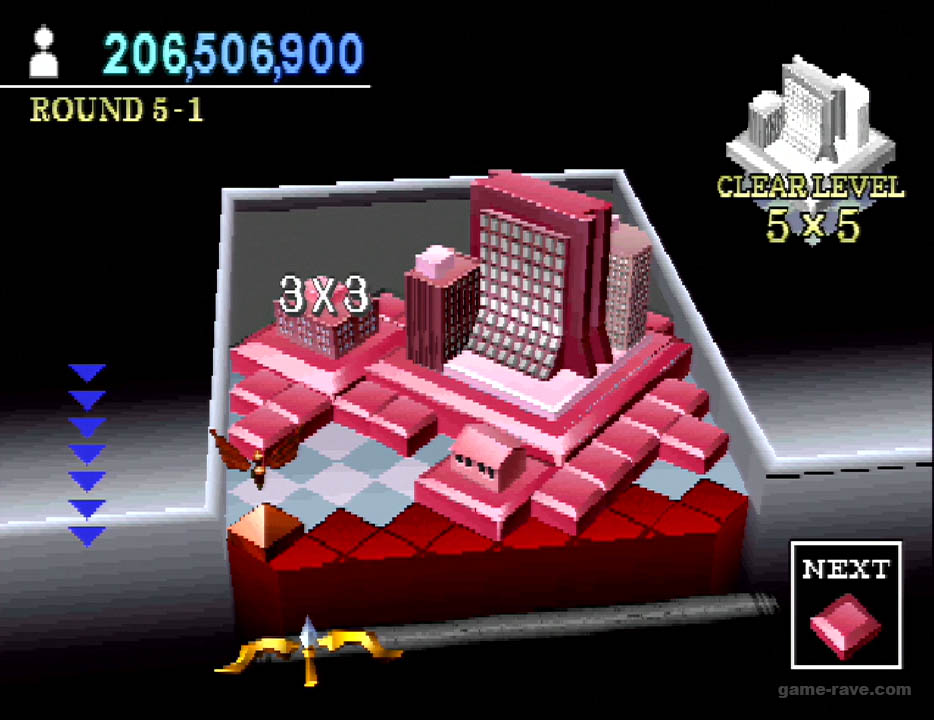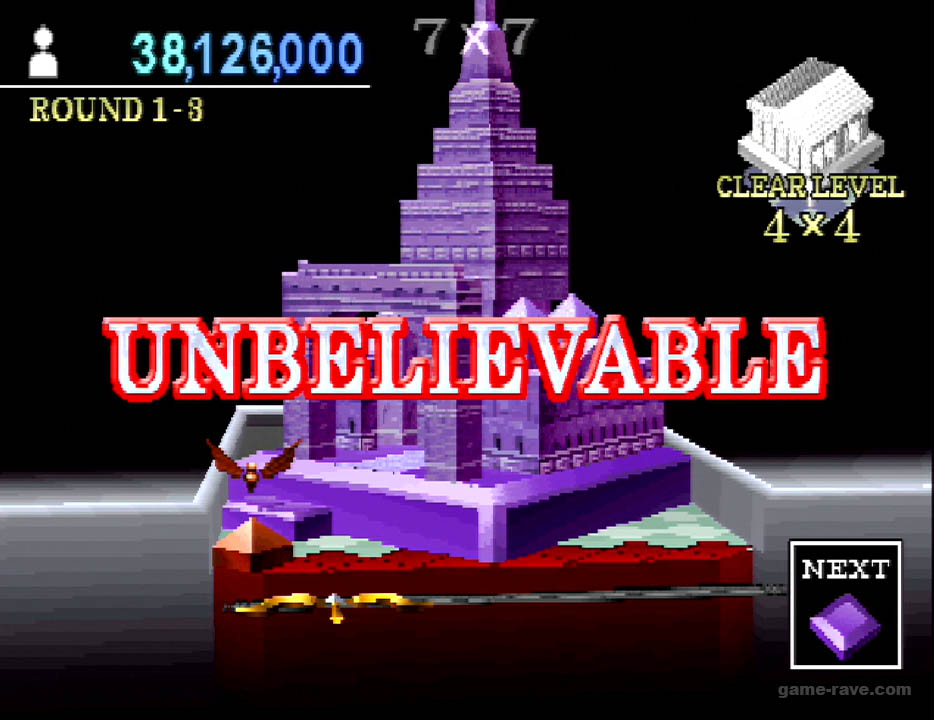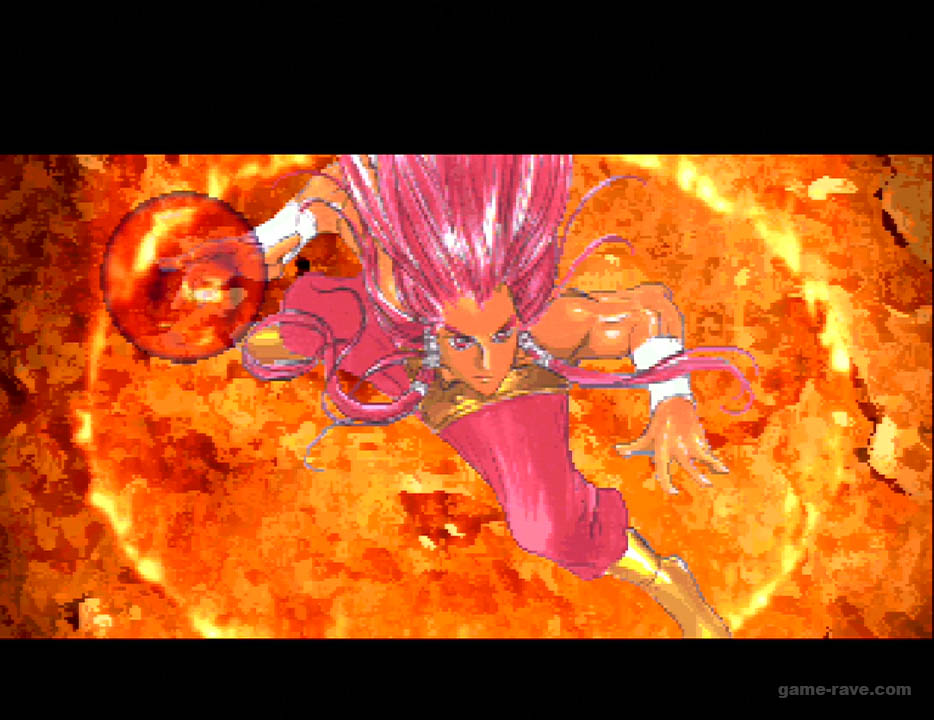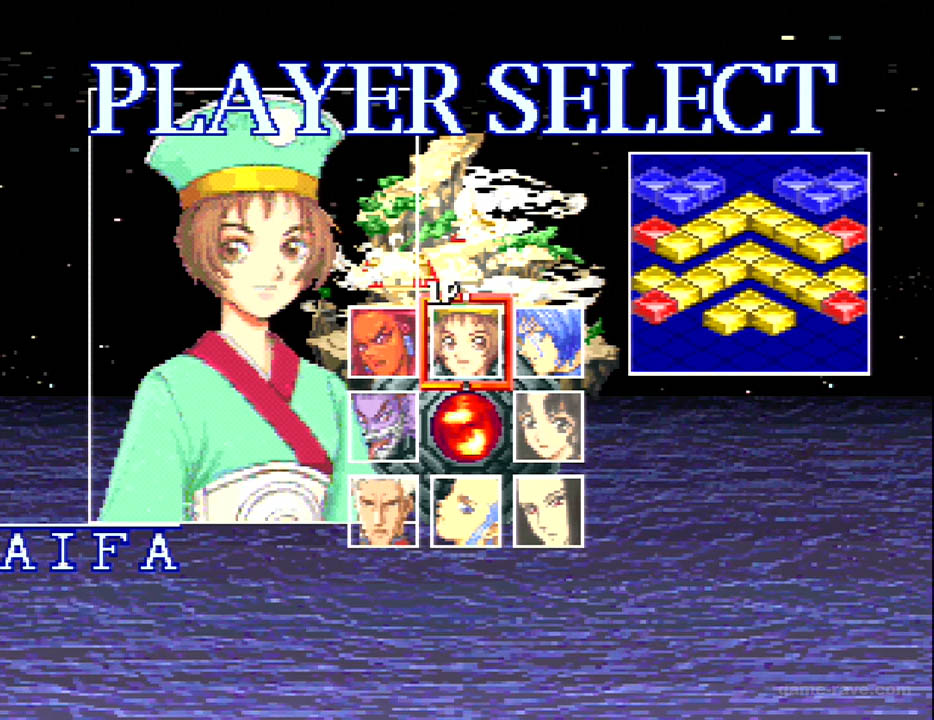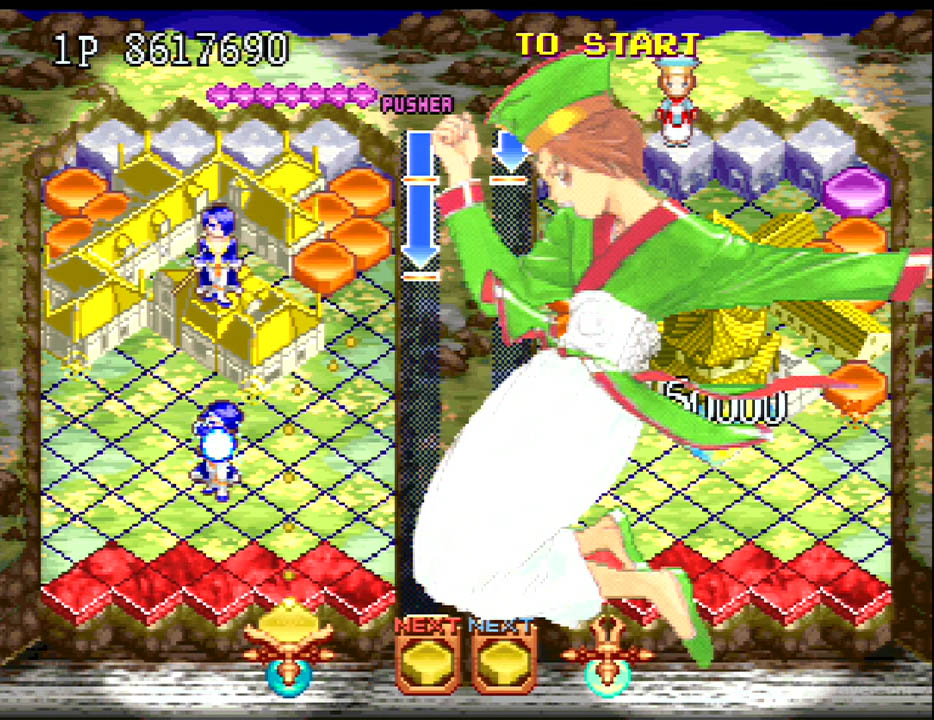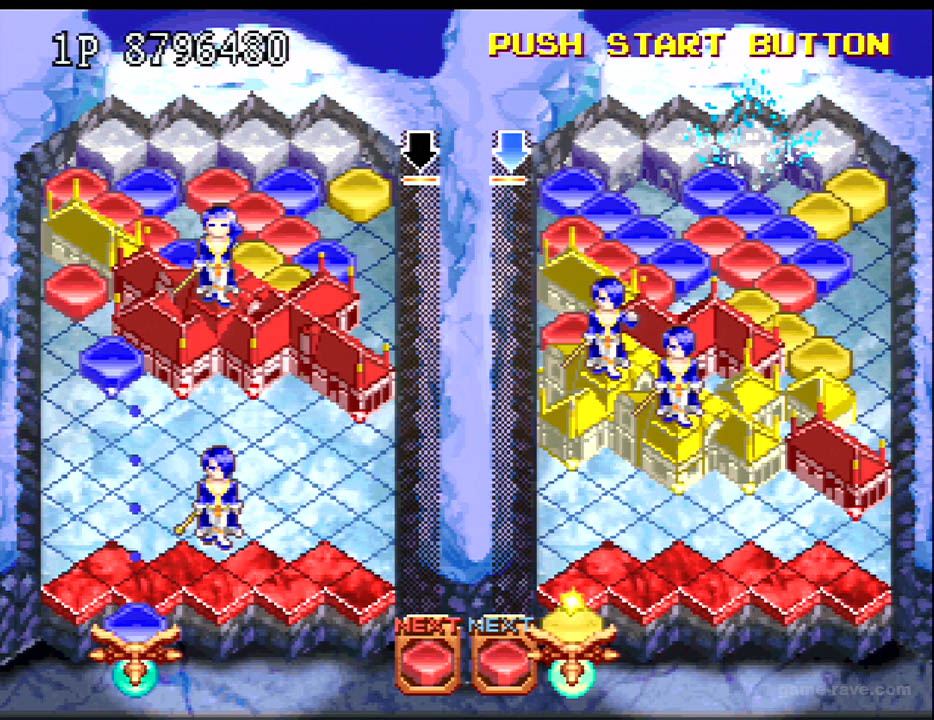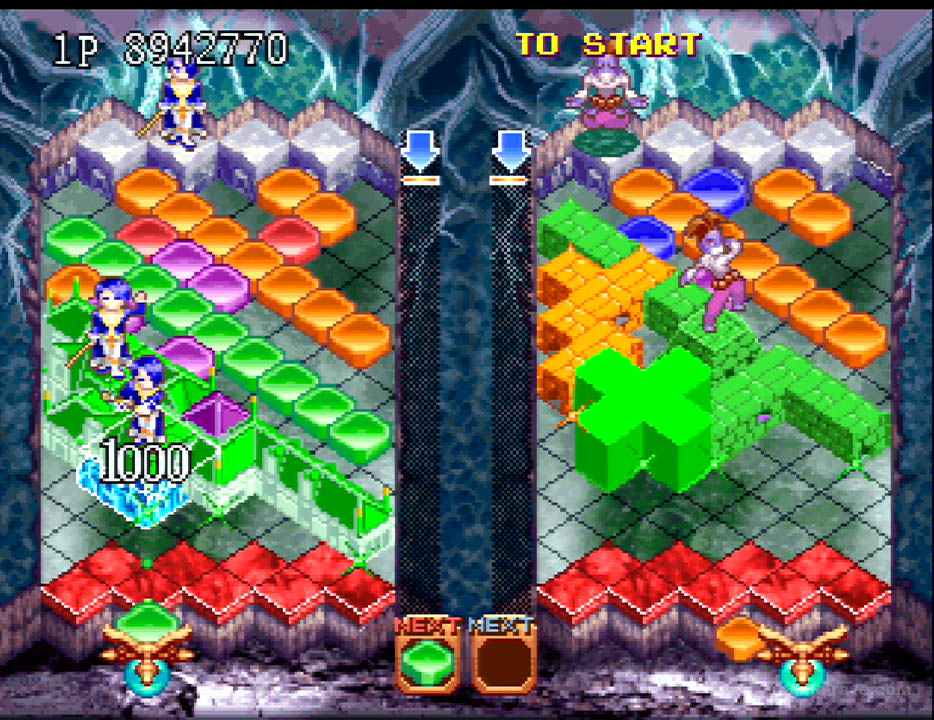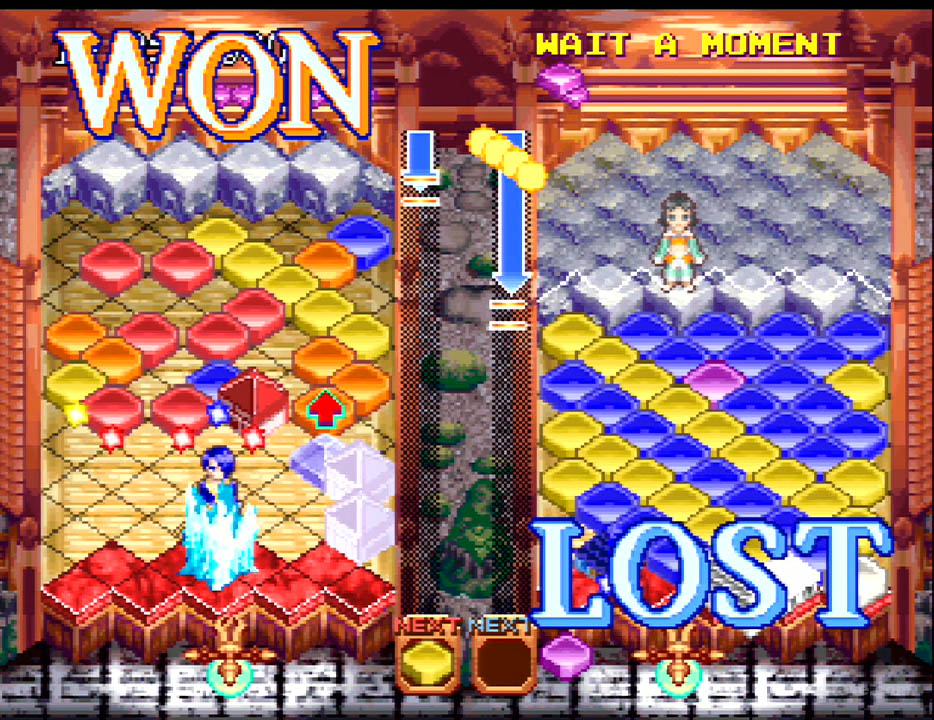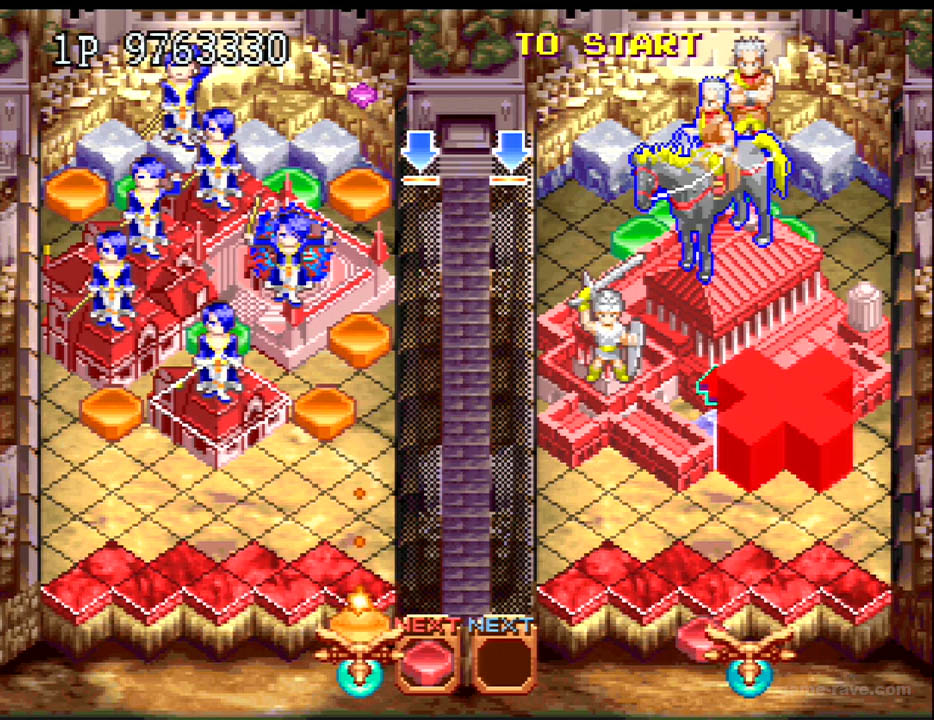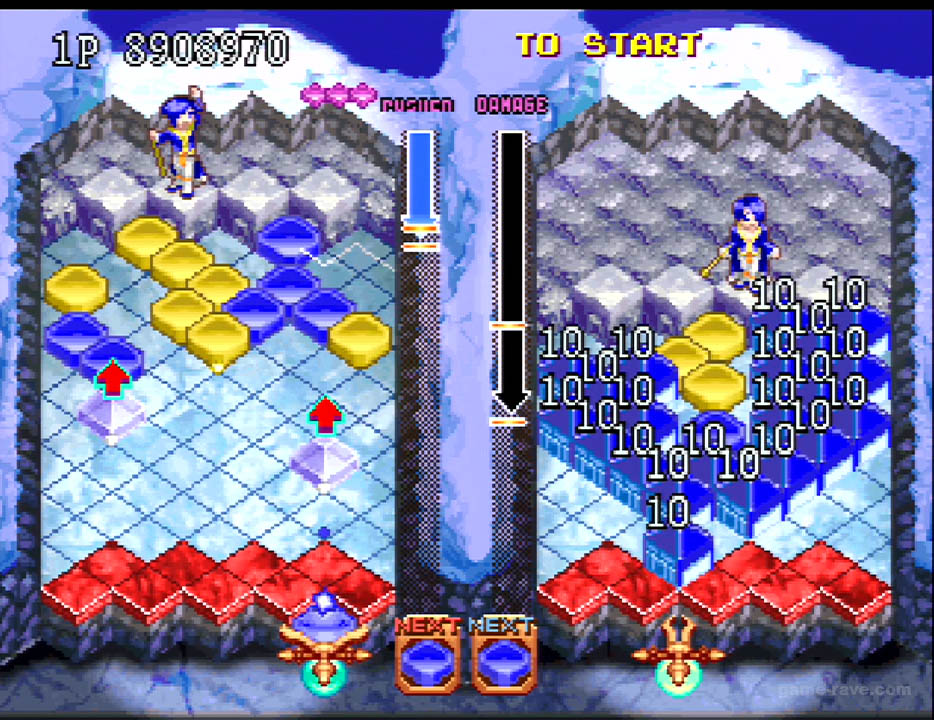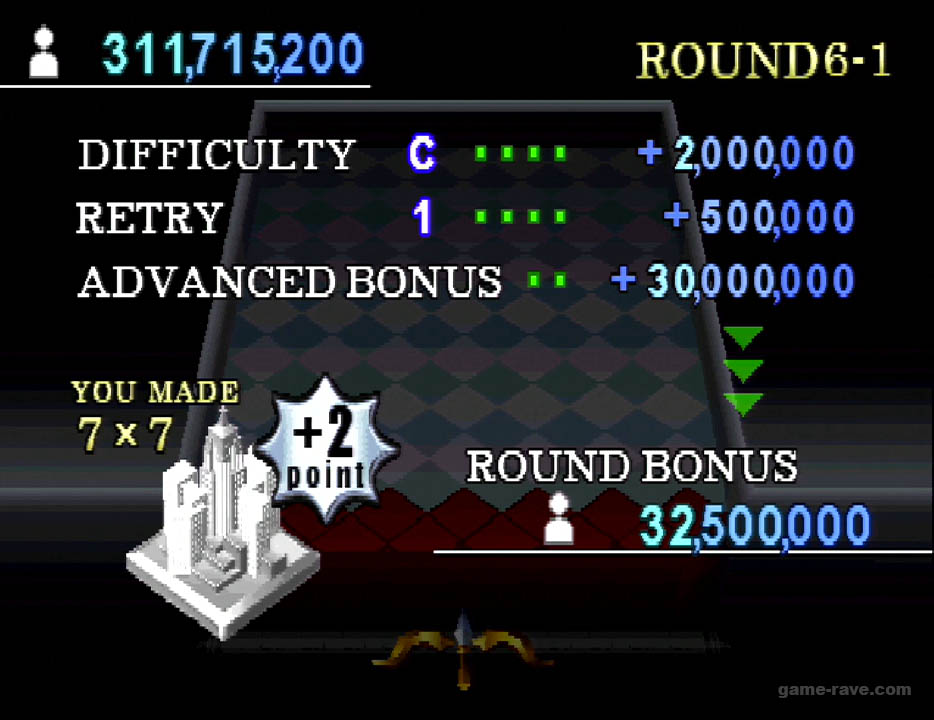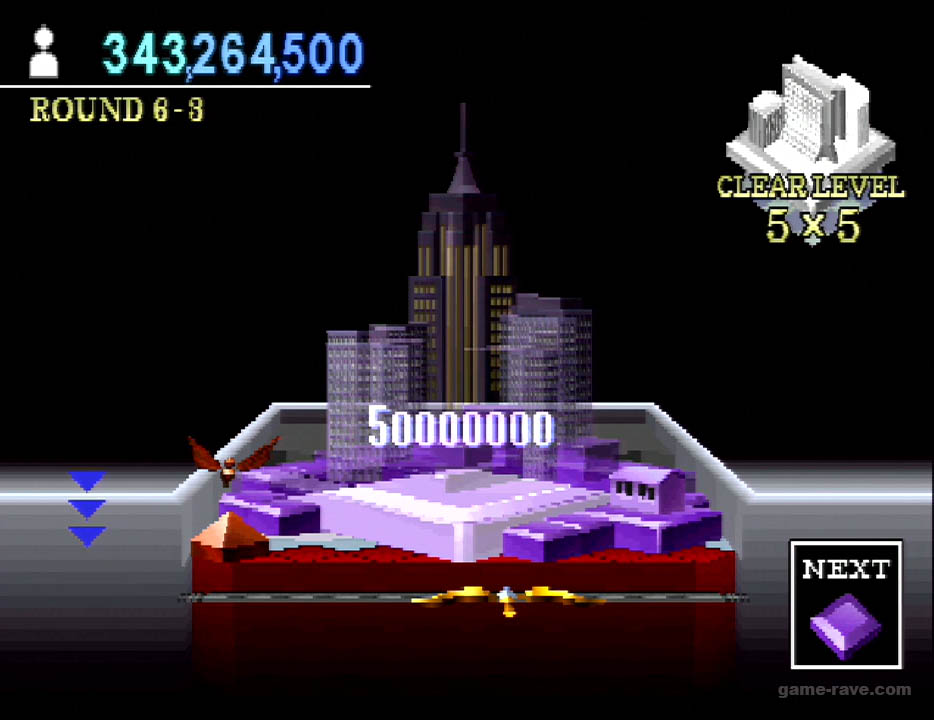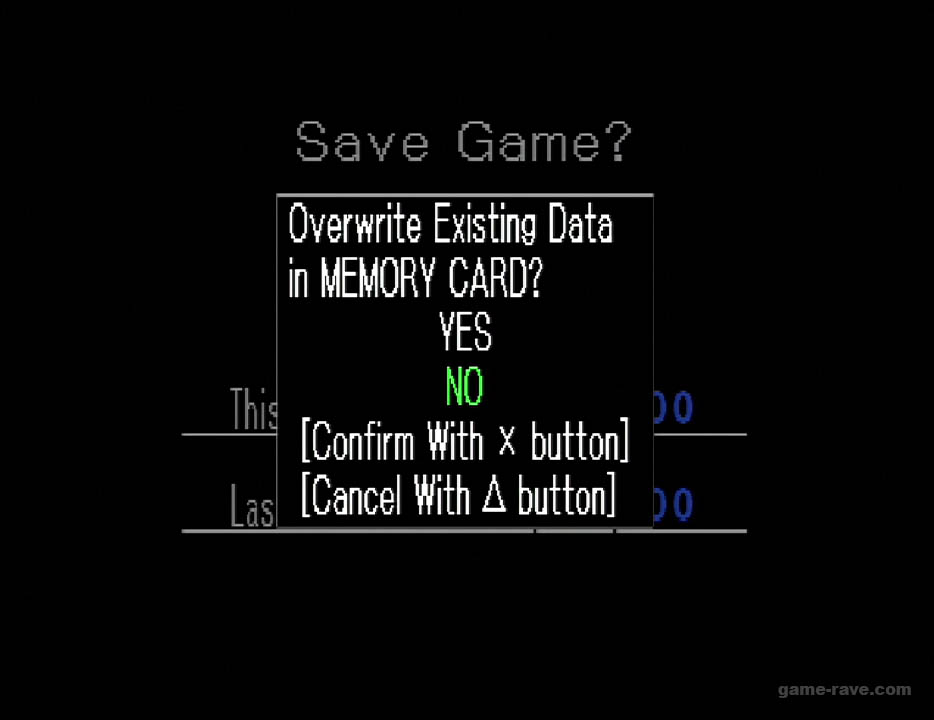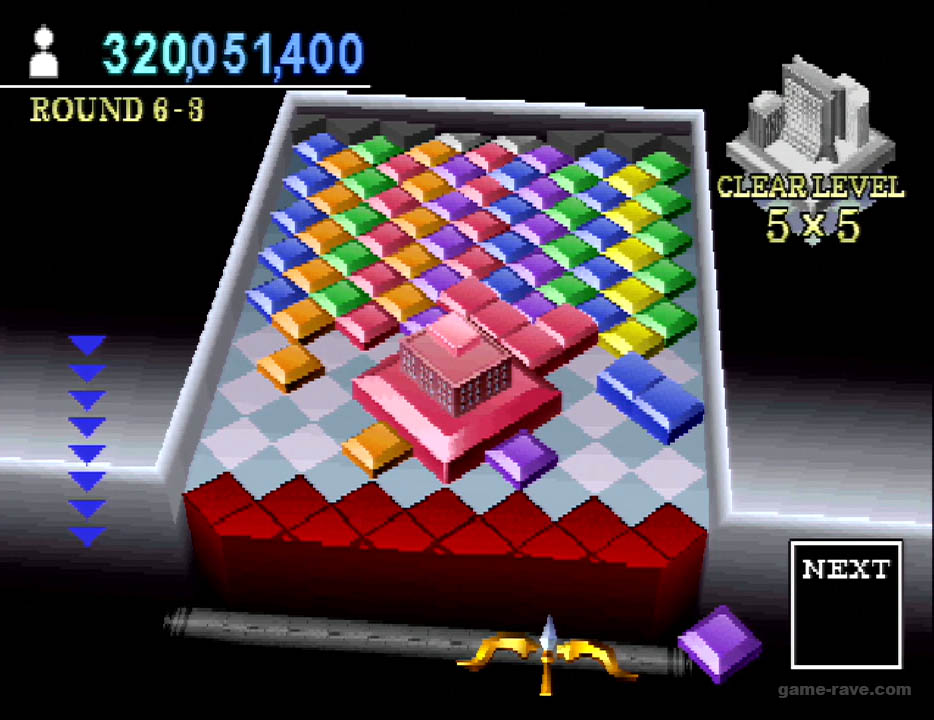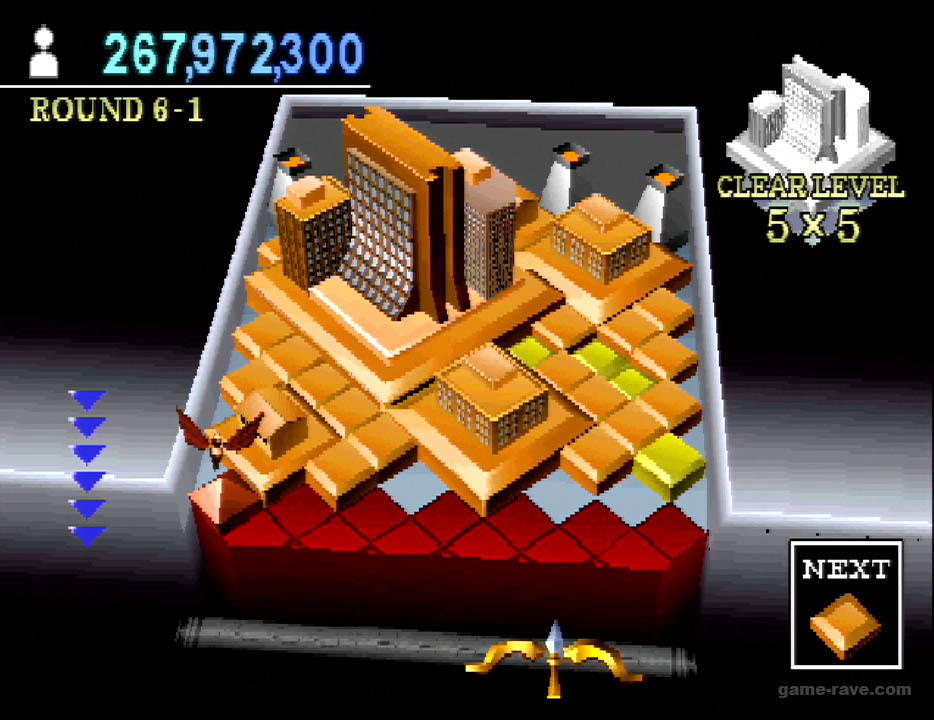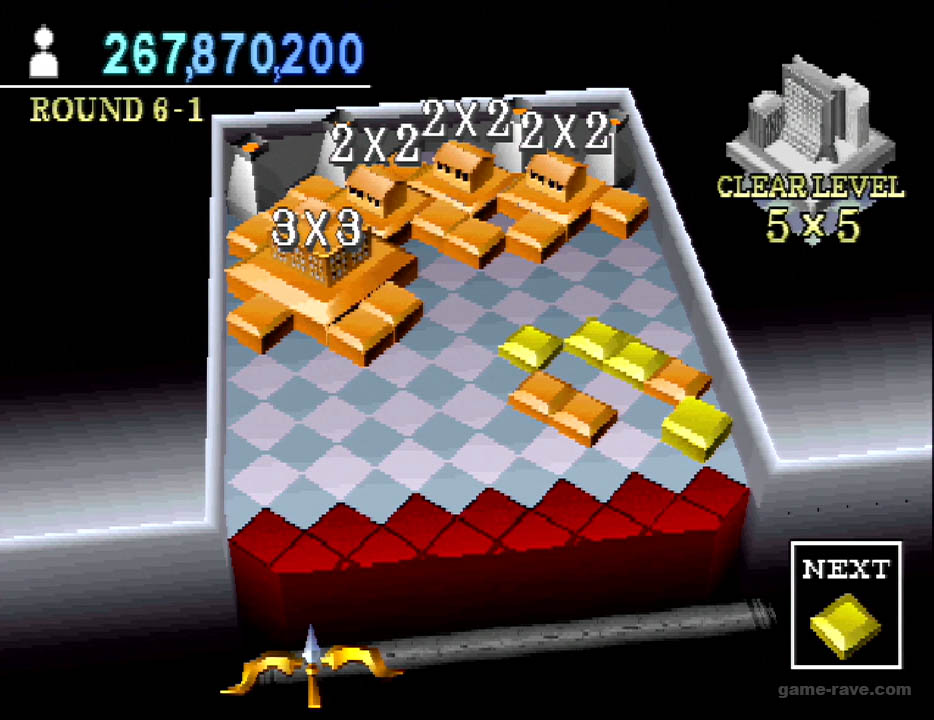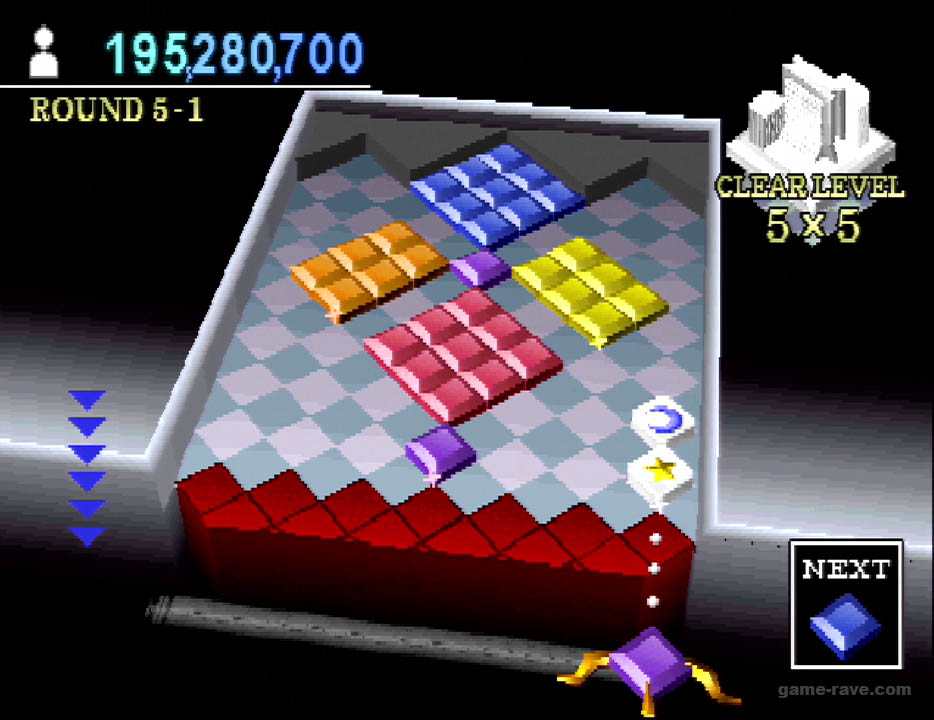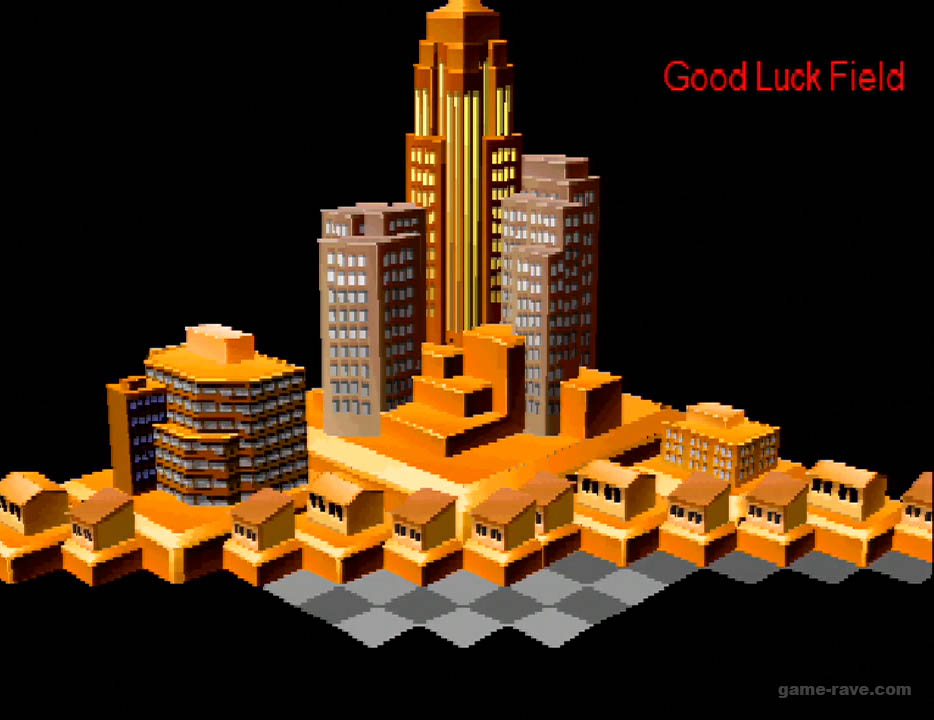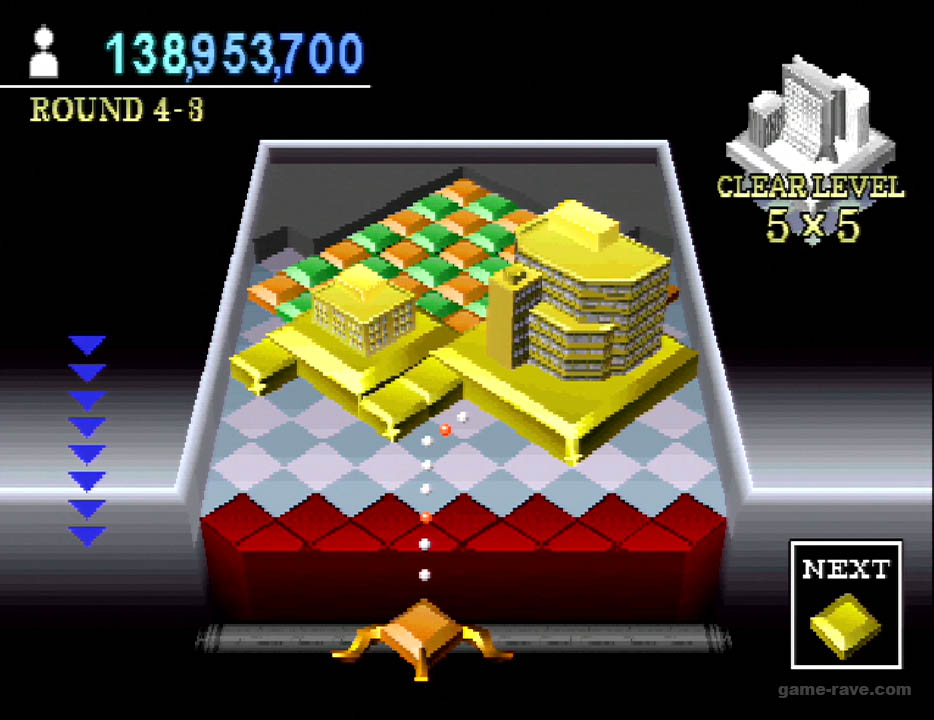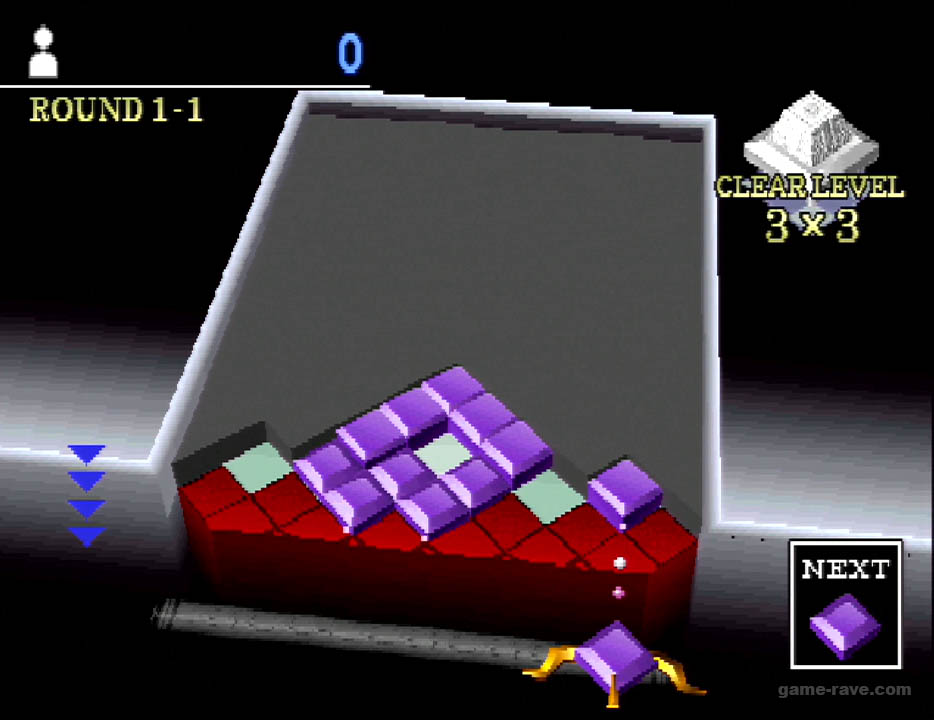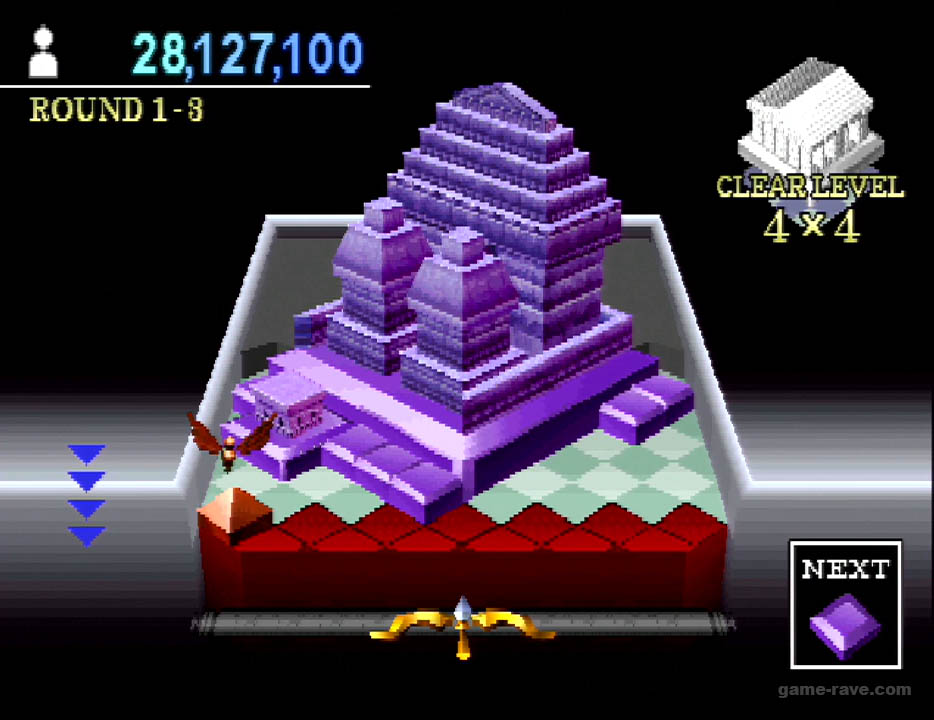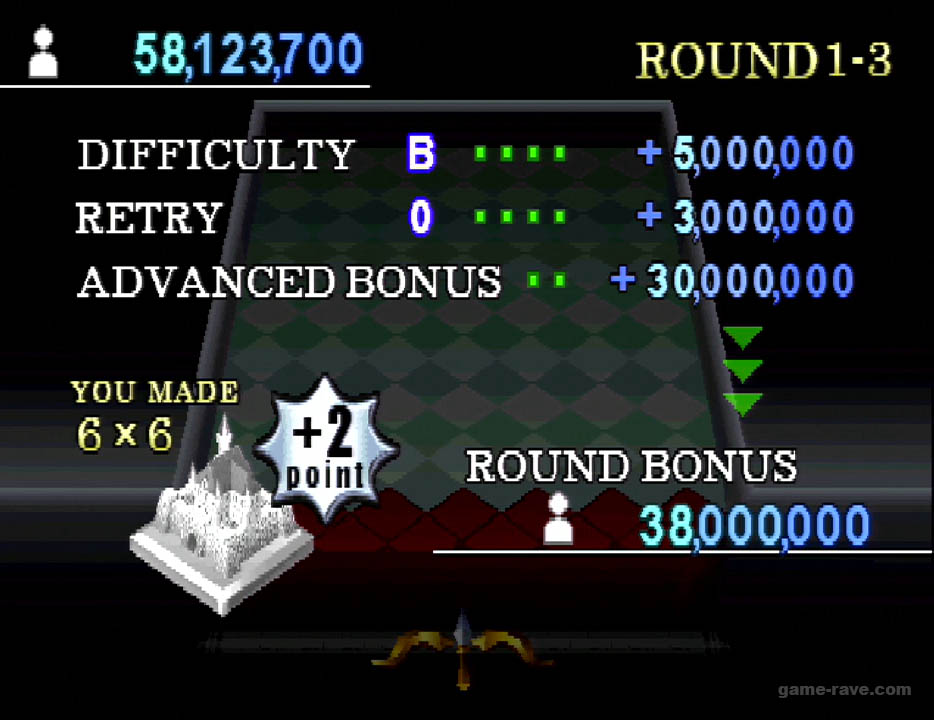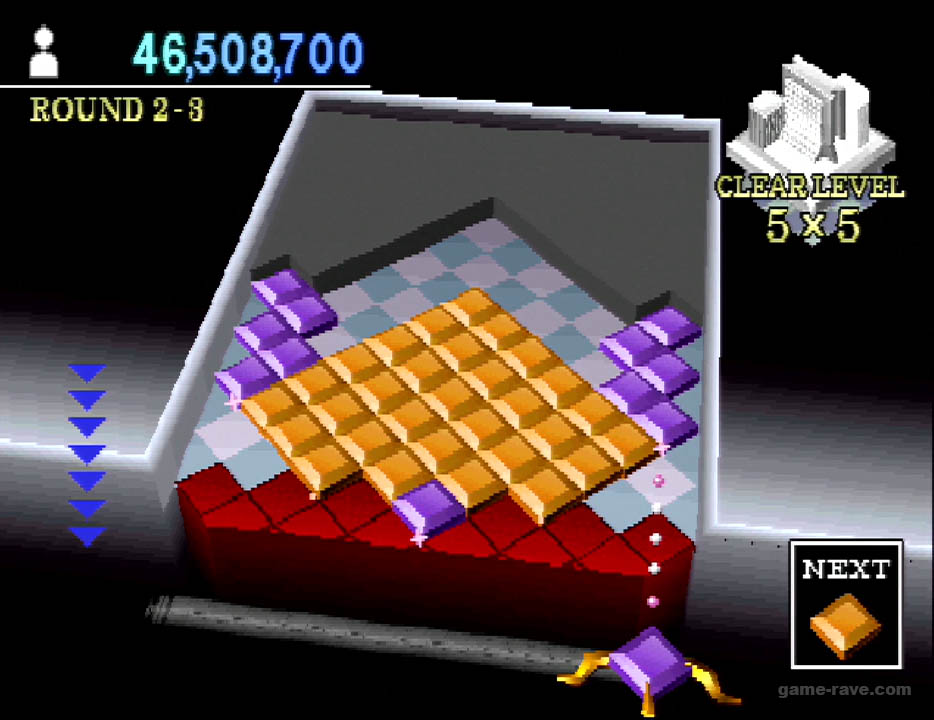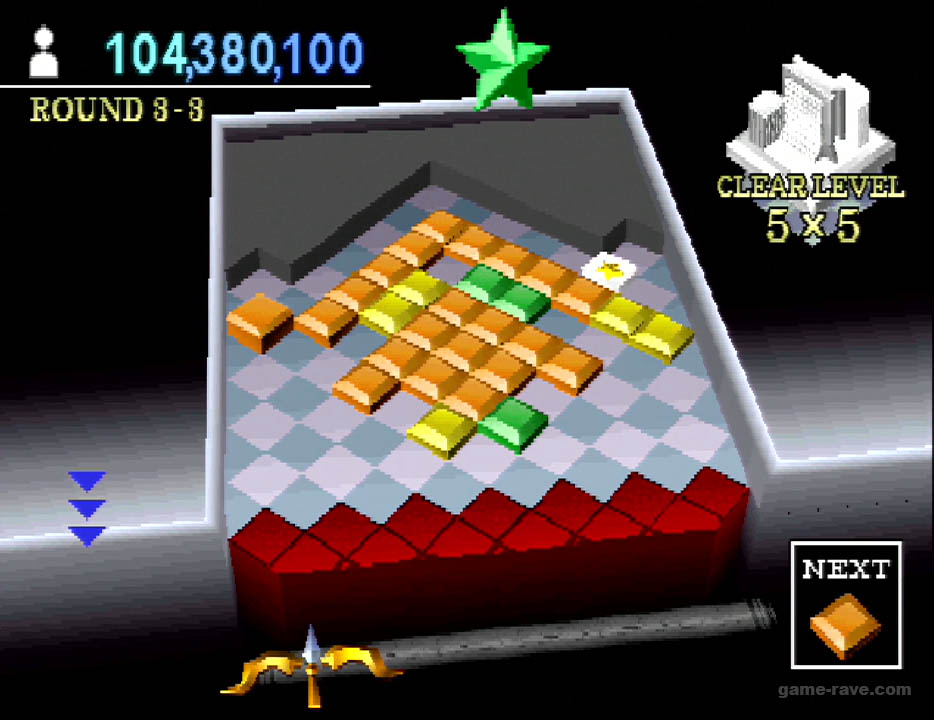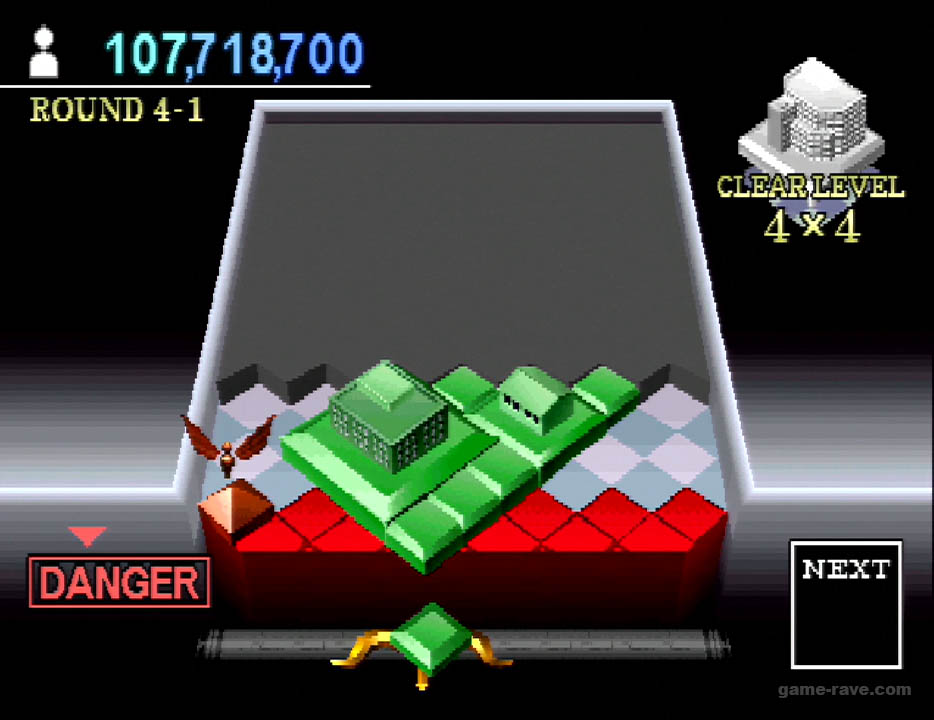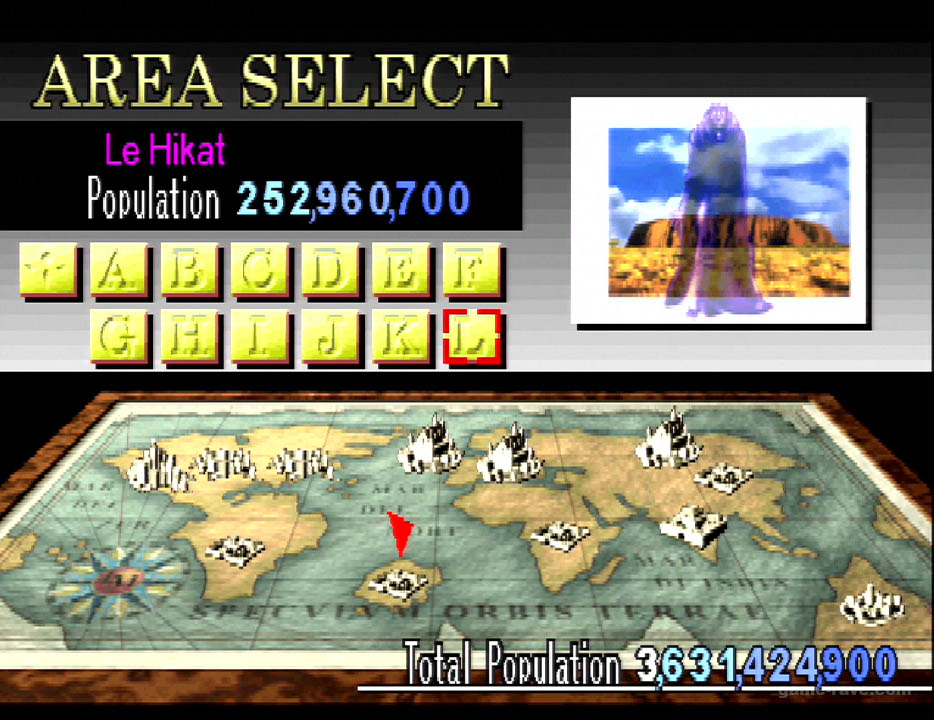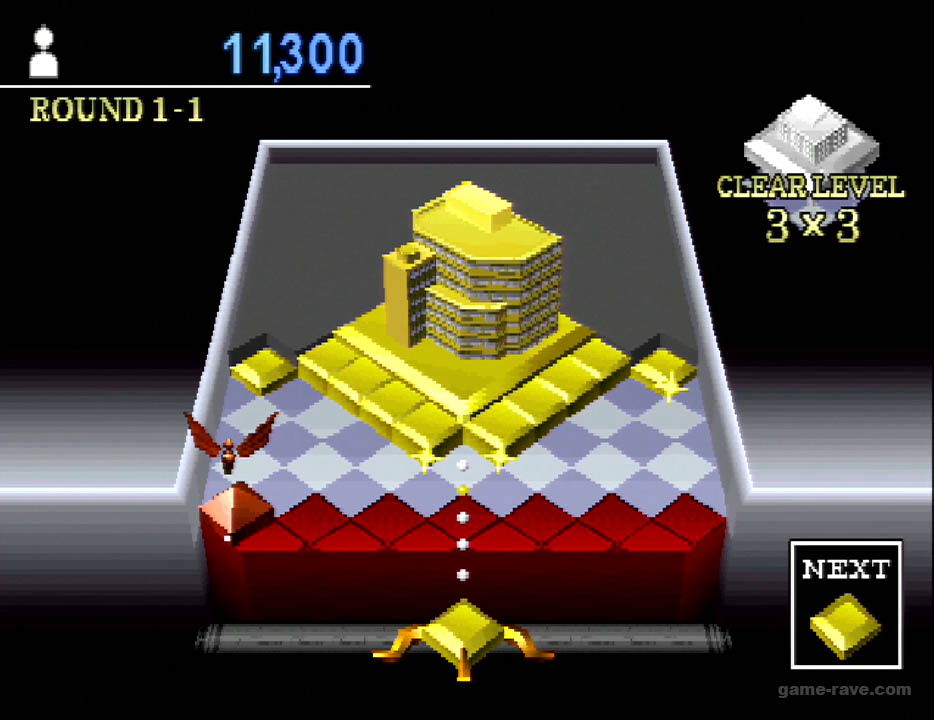| Genre: Puzzle |
CDs: 1 |
|---|---|
| Publisher: Jaleco |
Released: July 12, 2000 |
| Developer: Taito |
UPC: 0 32264 50017 0 |
| Sony ID: SLUS-01086 |
PSRM: 017740 |
| Players: 1 to 2 Players |
Memory: 1 Block |
| Accessories: Vibration |
|
| ESRB: Everyone – No Descriptors |
|
| Box Copy:
Builder’s Block: It’s more than just a chip off the old block. Enter the world of Builder’s Block – the gash and dash universe! Try your gaming skill at the ultimate build and destroy game. Try one of three hair-raising modes: Puzzle, Battle or Arcade. Hours of fun building up your universe, with the power to destroy it. The bigger the buildings, the more points you get when it falls. Say what? It’s crazy, but true! Builder’s Block has colossal graphics, lightning fast game play and wacky sound effects to really put you inside the action! |
|
Variants
- There are no known variants.
Misprints
- There are no known misprints.
Review
The PlayStation is no stranger to puzzle games with legends like Tetris and Bust-a-Move joining then newcomers Super Puzzle Fighter II Turbo and Tecmo Stackers. But if you dig a little deeper into the library, you’ll find one of the platform’s best puzzle games hiding in plain sight.
Builder’s Block’s history is one of intrigue and subtlety. It started life exclusively in Japanese arcades under the name Land Maker – where it debuted in 1998. Arcade fans looking to research the source material should know it runs on Taito’s F-3 combo board set-up. Like many other games of that era, it features wonderfully bright anime inspired graphics, cheeky animations, and uses both colors and combination patterns for it’s base game play. Wildly styled characters fend off against each other with their own drop techniques, eventually going face to face with two end bosses.
The game’s hook comes in the form of its visual style and power-up system. Like the previously mentioned Super Puzzle Fighter, when playing in arcade mode you will have to chain together blocks to create land masses. As the size of the square grows, so too will the building style and damage potential of the cluster. Building strength starts out as little 2×2 homes, and as the square continues being built eventually becomes an enormous skyline. Once you have a deadly enough sized cityscape, you launch another standard piece into the corner of the square to clear it, causing an appropriate number of neutral blocks to fall on the opponent’s side.
To help with the players’ structural integrity are Power-Up blocks. These can be generated by 3 square-wide and 4-square wide structures along with randomly appearing. The Star will cause all matching colors of the trigger piece to disappear. The moon power-up will turn every piece into the trigger block’s color, creating an instant small city to tear down. Unique to the arcade game is the Arrow Block, which sends the entire deck back one space, buying the player more time to set-up their city.
For the truly adventurous, collapsing buildings that are 5 squares or higher will generate planetary bonuses, with the highest possible 7-wide generating the sun itself. These power-ups will remove a section of your playfield and replace it a variety of buildings. Quickly filling in the remaining gaps will grant the user a speedy set of neutral drops launched at the opponent’s playfield.
Just like in other puzzlers, players are tasked with choosing their on-screen avatar. Their selection will determine the ending of the game as well as the offensive drop on their rival. Fans of Puzzle Fighter will take to arcade mode instantly, especially with the humor and trash talking the characters do.
Animation in the arcade game is wonderfully cheeky, if perhaps there’s maybe a bit too much of it. When larger combinations are activated, full screen images of the characters pop-up and slide across the screen, blocking the view of all those involved. When players are able to create multiple larger blocks, each character has animations that will play over the newly formed pieces. Definitely amusing, but also distracting if you get caught up in the action. Gamers can tackle the single-player campaign or bring a friend over for versus fun.
Landmaker in its original form would have been a wonderful budget title release, but Taito made a brilliant decision by essentially remastering the game into a more cerebral adventure. With arcade mode out of the way, it’s time to discuss your next addiction, Builder’s Block’s Puzzle Mode.
Puzzle Mode takes the arcade game’s base concept and filters it through a modern perspective. First, it removes the Arrow Block from the possibilities. Second, it provides an already populated board with a building size objective. The catch is that rather than face an opponent, the player is limited to the number of moves you can make per turn. Once the turn is up, the wall will push the playfield forward. The goal is to make the minimum goal before the wall pushes the blocks too far down the board, destroying the needed space to make the target city.
This is where Puzzle Mode’s genius hides – there’s no timer. It’s just the player, a set of moves, and an oncoming wall. The revelation comes in the amount of moves one is allowed. On the turn that the player creates the required sized block, their set of moves is expanded and reset without causing the wall to drop. Crucially the most important aspect – this reset of moves is how you’ll be able to unlock the 6x and 7x constructs. Which is extremely important since not every level allows you the chance to make them.
Once you have that knowledge, the real goal of Puzzle Mode is brought into view. Playing off the arcade original’s character roster, Puzzle Mode presents fictitious but clearly inspired human characters that are all looking to build the next great mecca. Each letter represents a different visual style and heritage presented on screen. Rather then points, the game tracks the number of people living withing the buildings you create. Each Letter is divided into 6 Levels, with 3 stages each, for a total of 18 puzzles to solve.
Of cheeky mention is the ‘All Clear Piece’ you’re awarded for clearing a stage. Once the stage goal is achieved, the Red Statue pops out onto the play-field. Except…it’s an actual play piece. If the player doesn’t trigger it with a game piece, they can still create buildings until it’s no longer possible. The issue is that it’s a viable piece. It will block and deflect your shots, as well as cause a Game Over if it is pushed off the ledge. It’s worth noting that while red, if you generate a building larger than the required one, the All Clear Piece arrives as a darker gray piece, signaling your achievement.
All 6 levels per letter are similarly themed. Level 1 usually concerns just making the building size you need. Level 2 revolves around more unique existing pieces, all the way up to Level 6, where dastardly mental hoops are the norm. Finishing each of Letters A – F, with F being the “Boss Level”, will open a corresponding bonus Letter. The Bonus “Boss Letter” is one of the most mentally taxing, grin inducing moments I’ve ever experienced on PlayStation hardware. The number of times you reset a stage because it really is your fault only strengthens the resolve to figure it out.
While you can finish Puzzle Mode with any score, the main goal is to achieve an A+ Ranking for your population. The only way to get that ranking is to take full advantage of the larger sized building creations and rocking the timer resets. Aside from finishing each stage, population points are gained based on how much larger you make the buildings, as well as any additional buildings made after the fact.
Exploiting the scoreboard is the only way to reach that A+ Rank, but the game is programmed in a devious, almost casino-like way that will literally make you hedge bets against your own skill. What do I mean? Builder’s Block only allows you to save your progress outside of the stages. Meaning you can save after you win the whole Letter, or quit out of it. The gambling part comes in the next attempt; Builder’s Block only tracks one score per Letter. If you had an amazing million-point run but lost at the last second, and then re-tried with a lower score, it’s the second score that stays in memory. You essentially have to reload the game if you don’t improve your scores, or let it go and try again.
Once the scores are tallied and Letter finished, Builder’s Block will rate your work with a Letter Grade, a City Level Rank, and a small description. The better you do, the better the city’s livelihood is. One of my cities struggled with air pollution with a Level 3 ranking, but my Level 6 ranking turned that city into a Capital. They even visually track your progress with a mini-city scale, but fully fleshing out the scale only gets you to an average ranking.
Having successfully beaten arcade mode with a couple of characters and finally run the table in Puzzle Mode with a final A+ Rank, the question is…is it worthy of having in your collection?
Absolutely.
Builder’s Block is a rare breed of a game. It’s an obscure arcade game given life on a then modern platform with a modest release from a then slowly sinking-into-obscurity publisher in Jaleco. With the game’s cover being a confusing a Photoshop collage and the back looking like every other puzzle game you’ve seen, it’s understandable that no one would give it a second look.
In reality, it’s one of the most intriguing, addictive, and time sinks I’ve played in a very long time. It not only rewards the player, but demands they get better and expects them to get better. Some stages that I originally left behind with a population of 1 Million now sit at over 400 Million. The feeling of finally achieving that first “Unbelievable” 7-square building, tied to knowing you can always do just that much better in each stage is an emotional high very few games can provide. Much less provide it on a constant basis.
While the lack of saving between stages and not just defaulting to your highest score will put some folks off, I can not state just how good Builder’s Block really is. Its flaws are few, its puzzles creative, and if you have a friend to spar with in Versus Mode, it’s an all new arena.
The Good
- Extremely fun arcade game
- Wicked Puzzle Mode that demands the best of you
- Versus Mode is different between the modern tale and original arcade
The Bad
- No real reward for finishing Puzzle Mode outside of a “Congratulations!”
- The 5×5 Squares and higher puzzle mode bonus drops could have used more variety
- It only saves one score per Puzzle Letter, and it’s only the current one.
Final Score: 9 / 10 – Excellent
Builder’s Block is a phenomenal puzzle game tied to a fun origin story. While a single player will lose their life to Puzzle Mode, both Versus Modes compliment the overall experience. One for the permanent collection.
Screenshots
Builder’s Block – Arcade Mode.
Builder’s Block – Puzzle Mode
Videos
The video review of Builder’s Block.
Trivia
- Originally an arcade puzzle game called Landmaker, released only in Japan. Japan and Europe kept the original name.
- The arcade game ran on Taito’s F3 arcade hardware alongside another PlayStation port – Cleopatra’s Fortune.
- Puzzle Mode ranks your cities through 6 Levels, with 6 being the highest rank of ‘Capital’. It takes about 400,000,000 points for it to reach that plateau.
Secrets
Builder’s Block carries some secrets on both sides of the selection screen. Let’s get into it!
Puzzle Mode
- Unlock All Cities
On the main menu, press Left, Right, Left, Left, Right, Right, Left, Right, Triangle. Once in the Puzzle Mode, all the locked ? blocks will reveal the other cities.
Arcade Mode
- Unlock Another World
At the arcade title screen where it’s blinking “Game Over” and “Press X Button”:
quickly press L1, Left, Right, L1. You will see a single character appear in the bottom right corner. When you start the game, it will read ‘Another World’ in the corner. Once started, the in-game backgrounds will have a different look. - Unlock Boss Characters
At the arcade title screen where it’s blinking “Game Over” and “Press X Button”:
Press L1, Left, Right, Left, L1. Two of the characters will appear in the bottom right corner of the screen. Once at the character select screen, you can now choose boss characters Ranju and Gaira. - Ultimate Mirror Match
Under normal progression, players will fight against their own character at the halfway point of the game. However, there’s a secret ultra match hiding from you. To reach this hidden Mirror Match, play through Arcade Mode with out continuing. After defeating Gaira a screen reading “Try Bonus Stage” will appear.In this secret Mirror Match, there is essentially only one piece color. Like Dan’s stage in Super Puzzle Fighter II Turbo, it’s the first person to spam ultra combos that will reign supreme.








